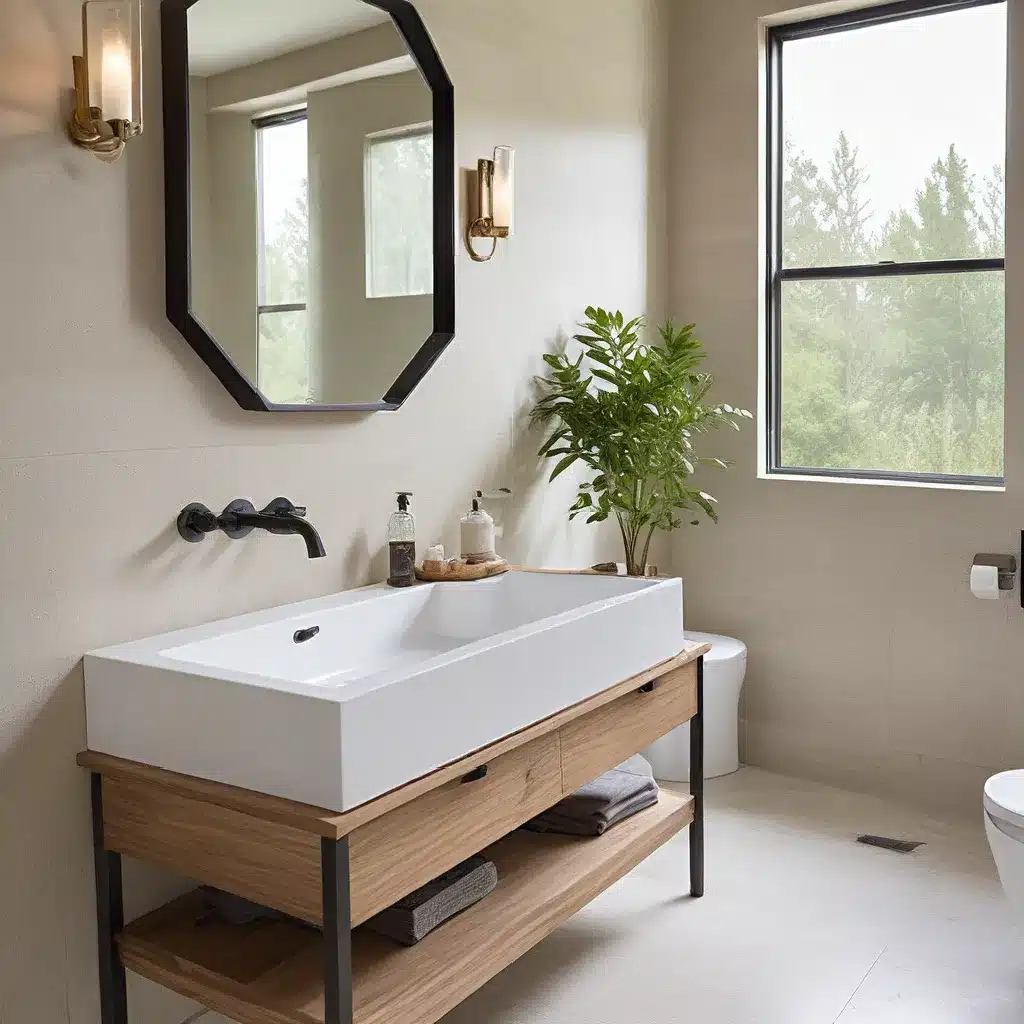
As the world becomes increasingly conscious of its environmental impact, the demand for sustainable bathroom design has reached new heights. Gone are the days when water-guzzling fixtures were the norm – today’s savvy homeowners, designers, and contractors are seeking out innovative solutions that marry style with water efficiency. At the forefront of this movement are washbasins and sinks, which hold the power to transform both the aesthetics and the eco-friendliness of any bathroom space.
Exploring the World of Water-Wise Washbasins
When it comes to sustainable bathroom design, the humble washbasin is a true champion. Low-flow toilets and water-saving showerheads may grab the headlines, but the unsung hero of water conservation is the trusty sink. By selecting the right washbasin, you can dramatically reduce your household’s water consumption without sacrificing style or functionality.
Recent studies have shown that the average person uses around 88 gallons of water per day at home, with bathroom habits accounting for the majority of that usage. Leaks alone can waste an astonishing 90 gallons or more per day in some households. But with a few strategic upgrades, you can easily slash your water footprint and enjoy significant long-term savings on your utility bills.
The Power of Low-Flow Washbasins
At the heart of sustainable bathroom design are low-flow washbasins – fixtures that deliver the same great performance as their water-guzzling counterparts, but with a fraction of the environmental impact. These innovative sinks are engineered to use just 1.2 to 1.5 gallons per minute (GPM), compared to the 2.2 GPM standard of older models.
Not only do low-flow sinks conserve precious water resources, but they also come with a wealth of other benefits. Many modern designs seamlessly blend cutting-edge technology with contemporary elegance, ensuring your bathroom stays both eco-friendly and visually stunning. And with a wide range of styles, materials, and finishes to choose from, you can easily find the perfect low-flow washbasin to complement your unique design aesthetic.
Sink Materials: Exploring Sustainable Options
When it comes to sustainable bathroom design, the choice of sink material is just as important as the water-saving technology. Fortunately, there’s no shortage of eco-friendly options to explore:
| Material | Sustainability Features |
|---|---|
| Ceramic | Ceramic sinks are renowned for their durability, easy maintenance, and recyclability. Many ceramic manufacturers now offer low-embodied energy and low-VOC options, making them a smart choice for environmentally-conscious homeowners. |
| Porcelain | Similar to ceramic, porcelain sinks boast exceptional longevity and can be recycled at the end of their lifespan. Porcelain’s non-porous surface also helps prevent the growth of mold and mildew, reducing the need for harsh cleaning chemicals. |
| Recycled Glass | Crafted from repurposed glass bottles and containers, recycled glass sinks offer a unique and sustainable alternative to traditional materials. These sinks not only divert waste from landfills but also showcase a stunning, one-of-a-kind aesthetic. |
| Natural Stone | Sinks made from quarried stones like granite, marble, or soapstone can be incredibly durable and long-lasting. While the extraction process does have an environmental impact, many stone suppliers now prioritize responsible sourcing and conservation efforts. |
| Quartz | Engineered quartz sinks combine the beauty of natural stone with the added benefit of being non-porous and low-maintenance. Quartz manufacturers often incorporate recycled materials into their products, further enhancing their sustainability credentials. |
When selecting a sink material, be sure to consider not only the aesthetic appeal but also the long-term maintenance requirements and the overall environmental impact of production and disposal. By making informed choices, you can create a bathroom that is both visually stunning and eco-friendly.
Bringing Sustainability to Life: Installation and Maintenance
Once you’ve chosen the perfect water-efficient washbasin, the next step is ensuring a smooth and successful installation. Proper installation is crucial for maximizing the benefits of your sustainable sink, as improper techniques can lead to leaks, water waste, and even damage to the surrounding area.
When installing a low-flow washbasin, pay close attention to the manufacturer’s instructions and guidelines. This may include ensuring proper plumbing connections, properly sealing the sink to the countertop, and checking for any potential issues that could compromise the fixture’s efficiency. For those lacking DIY experience, it’s often wise to enlist the help of a skilled plumber or bathroom specialist to ensure a seamless and successful installation.
But the sustainability journey doesn’t end there. Maintaining your water-efficient washbasin is just as important as the initial installation. Regular cleaning and care can help preserve the sink’s performance and aesthetic appeal for years to come. Avoid harsh chemicals and abrasive cleaners, which can damage the surface and undermine the fixture’s sustainability. Instead, opt for eco-friendly cleaning products or make your own solutions using natural ingredients like vinegar, baking soda, and essential oils.
Embracing the Future of Bathroom Design
As the world becomes more conscious of our environmental impact, the demand for sustainable bathroom design has never been higher. Washbasins and sinks are at the forefront of this movement, offering homeowners, designers, and contractors a wealth of opportunities to reduce water usage without sacrificing style or functionality.
From low-flow fixtures to eco-friendly materials, the options for creating a water-wise bathroom are truly endless. By making informed choices and prioritizing sustainability, you can not only conserve precious resources but also elevate the overall aesthetic and functionality of your bathroom space.
So, whether you’re planning a complete bathroom renovation or simply looking to make a few strategic upgrades, be sure to keep sustainability at the forefront of your design. By embracing the power of water-efficient washbasins and sinks, you can create a bathroom that is both beautiful and environmentally responsible – a true reflection of the future of design.

